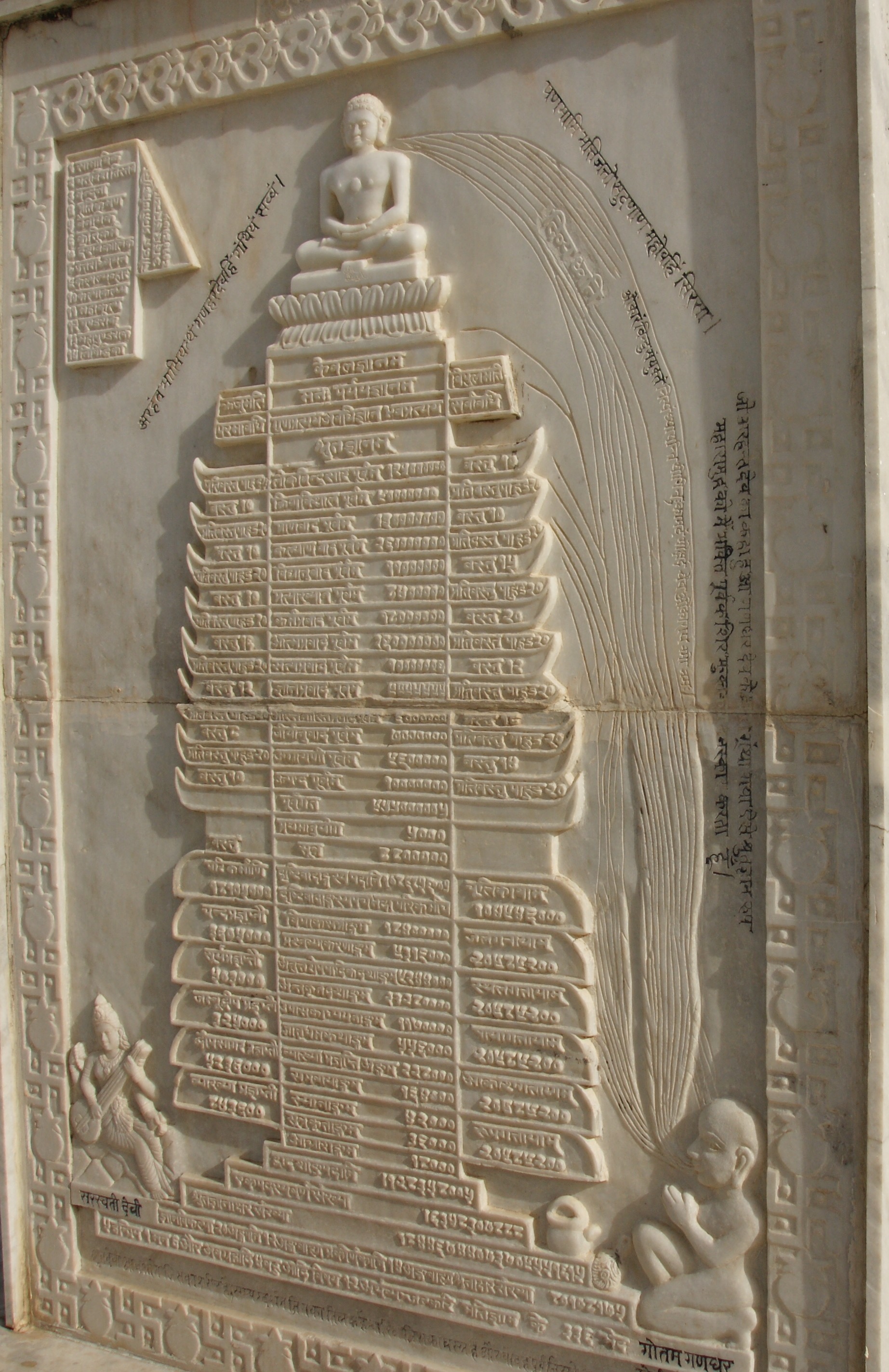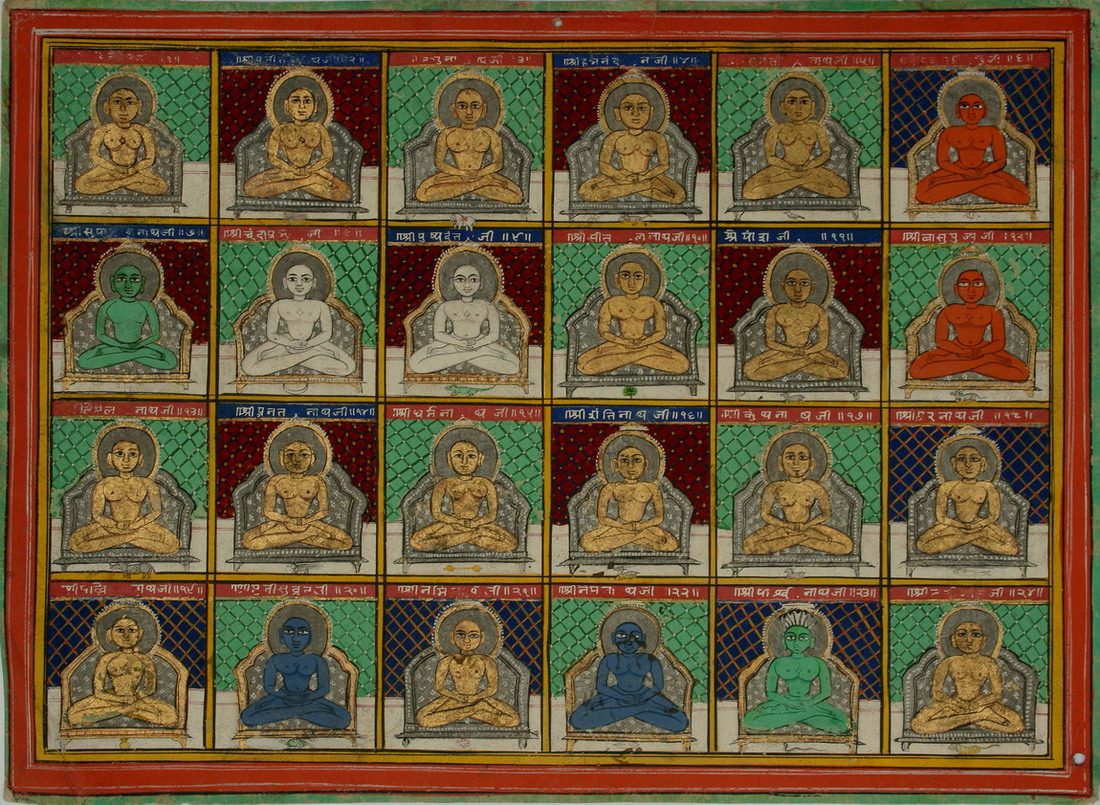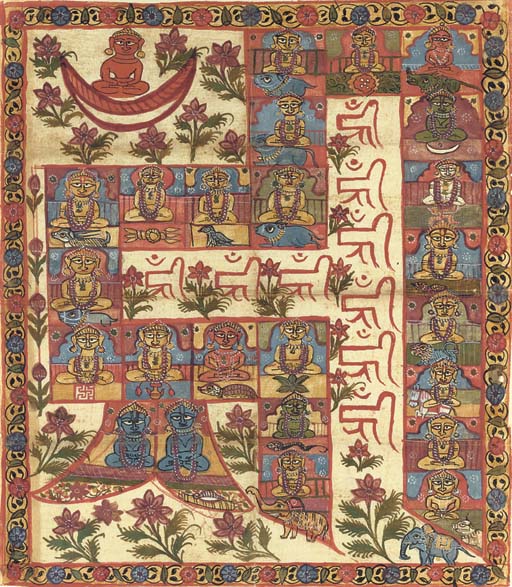|
Chandraprabh
Chandraprabha () or Chandranatha is the eighth Tirthankara of of Jainism in the present age (). According to traditional accounts, he was born to King Mahasena and Queen Lakshmana Devi at Chandrapuri to the Ikshvaku dynasty. According to Jain texts, his birth-date was the twelfth day of the Posh Krishna month of the Indian calendar. He is said to have become a siddha, a liberated soul which has destroyed all of its karma. Jain biography Chandraprabha was the eighth Jain '' Tīrthankara'' of the present age ('' avasarpini''). He was born to King Mahasena and Queen Lakshmana Devi at Chandrapuri, Varanasi on 12th day month Pausa in the Ikshvaku clan. Nine months before the birth of ''Chandraprabha'', Queen ''Lakshmana Devi '' dreamt the sixteen most auspicious dreams. Mahasena named Tirthankar Chandraprabha because of his complexion was white as moon. According to Uttarapurana, Indra named him Chandraprabha because at his birth the earth and night-lotus were blossomed. Chan ... [...More Info...] [...Related Items...] OR: [Wikipedia] [Google] [Baidu] |
Chandrawati Jain Temple
Chandrawati Jain temple is a Jain located in the Chandrawati village located from Varanasi. This place is believed to be birthplace of Chandraprabha, the 8th Thirthankara, of Jainism. History According to local tradition, the establishment of this place is attributed to King Domana Deva. In 1877, the English archaeologist A. C. L. Carlleyle conducted excavations at the site and unearthed the remnants of three Jain temples. The architectural style of these remains reflects the characteristics of the 9th and 10th centuries. Today, these precious remains, along with copper plate inscriptions, are carefully preserved at the State Museum Lucknow. Among the inscriptions is one dating back to 1091 CE, which highlights the temple's receipt of grants from King Chandradeva of Gahadavala dynasty. About temple There are two Jain temples one Digambara & one Śvētāmbara in the area. The temples were built to commemorate place for Panch Kalyanaka, three kalyanaka of Chandraprabha. Eve ... [...More Info...] [...Related Items...] OR: [Wikipedia] [Google] [Baidu] |
Jvālāmālinī
Jwalamalini (,, ) is the yakshini (guardian goddess) of the eighth tirthankara Chandraprabhu in Jainism and was one of the most widely invoked yakshinis in Karnataka during the early medieval period. Etymology and origin ' refers to ''the glow of fire'', ' implies ''one of bears the garlands (of)''. A well known historical text ''Jwalamalini Kalpa'' was composed by Jain Acharya Indranandi in 939 AD in Manyakheta during the rule of Rashtrakuta Krishnaraj. It is said to be inspired by an older text by the monk Helacharya, who had vanquished a Brahma Rakshasa by invoking Jwalamalini. Jain literature describe Jwalamalini as or the fire goddess. Her iconic forms depict her with flames issuing forth from her head. She is also described as adorned with rising flames of fire. Jwalamalini also appears in various Hindu Puranas, the ''Vayu Purana'' associates her with the god Shiva; the ''Brahmanda Purana'' and the ''Matsya Purana'' associate her with Shakti. Worship As per the ', ... [...More Info...] [...Related Items...] OR: [Wikipedia] [Google] [Baidu] |
Shikharji
Shikharji (), also known as Sammet or Sammed Shikharji, is one of the holiest pilgrimage sites for Jains, in Giridih district, Jharkhand. It is located on Parasnath hill, the highest mountain in the state of Jharkhand. It is the most important Tirtha (Jainism), Jain Tirtha (pilgrimage site), for it is the place where twenty of the twenty-four Jain tirthankaras (supreme preachers of Dharma) along with many other monks attained Moksha (Jainism), Moksha. It is one of the seven principal pilgrimage destinations along with Girnar, Pawapuri, Champapuri, Dilwara, Palitana and Kailash, Ashtapad Kailash. Etymology ''Shikharji'' means the "venerable peak". The site is also called Sammed Śikhar "peak of concentration" because it is a place where twenty of twenty-four Tirthankaras attained Moksha through meditation. The word "Parasnath" is derived from Parshwanatha, Lord Parshvanatha, the twenty-third Jain Tirthankara, who was one of those who attained Moksha (Jainism), Moksha at the sit ... [...More Info...] [...Related Items...] OR: [Wikipedia] [Google] [Baidu] |
Jain Texts
Jain literature () refers to the literature of the Jainism, Jain religion. It is a vast and ancient literary tradition, which was initially transmitted orally. The oldest surviving material is contained in the canonical ''Jain Agamas'', which are written in Ardhamagadhi Prakrit, Ardhamagadhi, a Prakrit (Middle Indo-Aryan languages, Middle-Indo Aryan) language. Various commentaries were written on these canonical texts by later Jain monasticism, Jain monks. Later works were also written in other languages, like Sanskrit and Maharashtri Prakrit. Jain literature is primarily divided between the canons of the ''Digambara'' and ''Śvētāmbara'' orders. These two main sects of Jainism do not always agree on which texts should be considered authoritative. More recent Jain literature has also been written in other languages, like Marathi language, Marathi, Tamil language, Tamil, Rajasthani language, Rajasthani, Dhundari language, Dhundari, Marwari language, Marwari, Hindi language, ... [...More Info...] [...Related Items...] OR: [Wikipedia] [Google] [Baidu] |
Ikshvaku Dynasty
The Solar dynasty or (; ), also called the Ikshvaku dynasty, is a legendary Indian dynasty said to have been founded by Ikshvaku. In Hindu literature, it ruled the Kosala Kingdom, with its capital at Ayodhya, and later at Shravasti. They worshipped their clan deity, Surya (a Hindu solar deity), after whom the dynasty is named. Along with the Lunar dynasty, the Solar dynasty comprises one of the main lineages of the Kshatriya varna in Hinduism. According to Jain literature, the first ''Tirthankara'' of Jainism, Rishabhanatha himself, was King Ikshvaku. Twenty-one further ''Tirthankaras'' were born in this dynasty. According to Buddhist literature, Gautama Buddha descended from the this dynasty. The important personalities belonging to this royal house are Mandhatri, Muchukunda, Ambarisha, Bharata, Bahubali, Harishchandra, Dilīpa, Sagara, [...More Info...] [...Related Items...] OR: [Wikipedia] [Google] [Baidu] |
Sammed Shikharji
Shikharji (), also known as Sammet or Sammed Shikharji, is one of the holiest pilgrimage sites for Jains, in Giridih district, Jharkhand. It is located on Parasnath hill, the highest mountain in the state of Jharkhand. It is the most important Jain Tirtha (pilgrimage site), for it is the place where twenty of the twenty-four Jain tirthankaras (supreme preachers of Dharma) along with many other monks attained Moksha. It is one of the seven principal pilgrimage destinations along with Girnar, Pawapuri, Champapuri, Dilwara, Palitana and Ashtapad Kailash. Etymology ''Shikharji'' means the "venerable peak". The site is also called Sammed Śikhar "peak of concentration" because it is a place where twenty of twenty-four Tirthankaras attained Moksha through meditation. The word "Parasnath" is derived from Lord Parshvanatha, the twenty-third Jain Tirthankara, who was one of those who attained Moksha at the site in 772 BCE. Geography Shikarji is located in an inland part of ru ... [...More Info...] [...Related Items...] OR: [Wikipedia] [Google] [Baidu] |
Tirthankara
In Jainism, a ''Tirthankara'' (; ) is a saviour and supreme preacher of the ''Dharma (Jainism), dharma'' (righteous path). The word ''tirthankara'' signifies the founder of a ''Tirtha (Jainism), tirtha'', a fordable passage across ''Saṃsāra (Jainism), saṃsāra'', the sea of interminable birth and death. According to Jains, ''tirthankaras'' are the supreme preachers of ''dharma'', who have conquered ''saṃsāra'' on their own and made a path for others to follow. After understanding the true nature of the self or soul, the ''Tīrthaṅkara'' attains ''kevala jnana'' (omniscience). A Tirthankara provides a bridge for others to follow them from ''saṃsāra'' to ''moksha'' (liberation). In Jain cosmology, the wheel of time is divided into two halves, Utsarpiṇī', the ascending time cycle, and ''avasarpiṇī'', the descending time cycle (said to be current now). In each half of the cycle, exactly 24 ''tirthankaras'' grace this part of the universe. There have been infini ... [...More Info...] [...Related Items...] OR: [Wikipedia] [Google] [Baidu] |
Tīrthaṅkara
In Jainism, a ''Tirthankara'' (; ) is a saviour and supreme preacher of the ''dharma'' (righteous path). The word ''tirthankara'' signifies the founder of a '' tirtha'', a fordable passage across ''saṃsāra'', the sea of interminable birth and death. According to Jains, ''tirthankaras'' are the supreme preachers of ''dharma'', who have conquered ''saṃsāra'' on their own and made a path for others to follow. After understanding the true nature of the self or soul, the ''Tīrthaṅkara'' attains '' kevala jnana'' (omniscience). A Tirthankara provides a bridge for others to follow them from ''saṃsāra'' to ''moksha'' (liberation). In Jain cosmology, the wheel of time is divided into two halves, Utsarpiṇī', the ascending time cycle, and ''avasarpiṇī'', the descending time cycle (said to be current now). In each half of the cycle, exactly 24 ''tirthankaras'' grace this part of the universe. There have been infinitely many tirthankaras in the past. The first ''tirthank ... [...More Info...] [...Related Items...] OR: [Wikipedia] [Google] [Baidu] |
Pushpadanta
In Jainism, Pushpadanta (), also known as Suvidhinatha, was the ninth Tirthankara of the present age ('' Avasarpini''). According to Jain belief, he became a siddha and an arihant, a liberated soul that has destroyed all of its karma. Biography Puṣpadanta bhagwan, also known as Suvidhinatha, was the ninth Tirthankara of the present age ('' Avasarpini''). According to Jain belief, they became a siddha and an arihant, a liberated soul that has destroyed all of its karma. Puṣpadanta bhagwan was born to King Sugriva and Queen Rama at Kakandi (modern Khukhundoo, Deoria, Uttar Pradesh) to the Ikshvaku dynasty. Their birth date was the fifth day of the Margshrsha Krishna month of the Vikram Samvat. Puṣpadant bhagwan was the ninth Tirthankara who re-established the four-part sangha in the tradition started by Rishabhanatha bhagwan. Pushpadanta prabhu is associated with Alligator emblem, Malli tree, Ajita Yaksha and Mahakali (Dig.) & Sutaraka (Svet.) Yakshi. See also *God ... [...More Info...] [...Related Items...] OR: [Wikipedia] [Google] [Baidu] |
Suparshvanatha
Suparshvanatha ( ), also known as Suparśva, was the seventh Jain '' Tīrthankara'' of the present age ('' avasarpini''). He was born to King Pratistha and Queen ''Prithvi'' at Varanasi on 12 Jestha Shukla in the Ikshvaku clan. He is said to have attained ''moksha'' at Shikharji on the sixth day of the dark half of the month of ''Phālguna''. Jain biography Life before renunciation Suparśvanātha was the seventh Jain '' Tīrthankara'' of the present age ('' avasarpini''). He was born to King Pratishtha and Queen Prithvi at Varanasi on 12 Jestha Shukla in the Ikshvaku clan. There is temple dedicated to Suparshvanatha built in Bhadaini, Varanasi to commemorate the birth of Suparshvanatha. Nine months before the birth of ''Suparśvanātha'', Queen ''Prithivī'' dreamt the sixteen most auspicious dreams. Suparśvanātha spent 5 lakh ''pūrva'' as youth (''kumāra kāla'') and ruled His kingdom for 14 lakh ''pūrva'' and 20 ''pūrvāṇga'' (''rājya kāla''). Suparśvanātha ... [...More Info...] [...Related Items...] OR: [Wikipedia] [Google] [Baidu] |
Uttarapurana
''Uttarapurāṇa'' is a Jain text composed by ''Acharya'' Gunabhadra in the 9th century CE. According to the Digambara ''Digambara'' (; "sky-clad") is one of the two major Jain schools and branches, schools of Jainism, the other being ''Śvetāmbara'' (white-clad). The Sanskrit word ''Digambara'' means "sky-clad", referring to their traditional monastic pract ... ''Uttarapurana'' text, Mahavira was born in Kundpur in the Kingdom of the Videhas. The narration in Uttarapurana continues the account in Mahapurana, written by Acharya Jinasena and completed by Gunabhadra. References Citations Sources * * Jain texts {{India-culture-stub ... [...More Info...] [...Related Items...] OR: [Wikipedia] [Google] [Baidu] |




